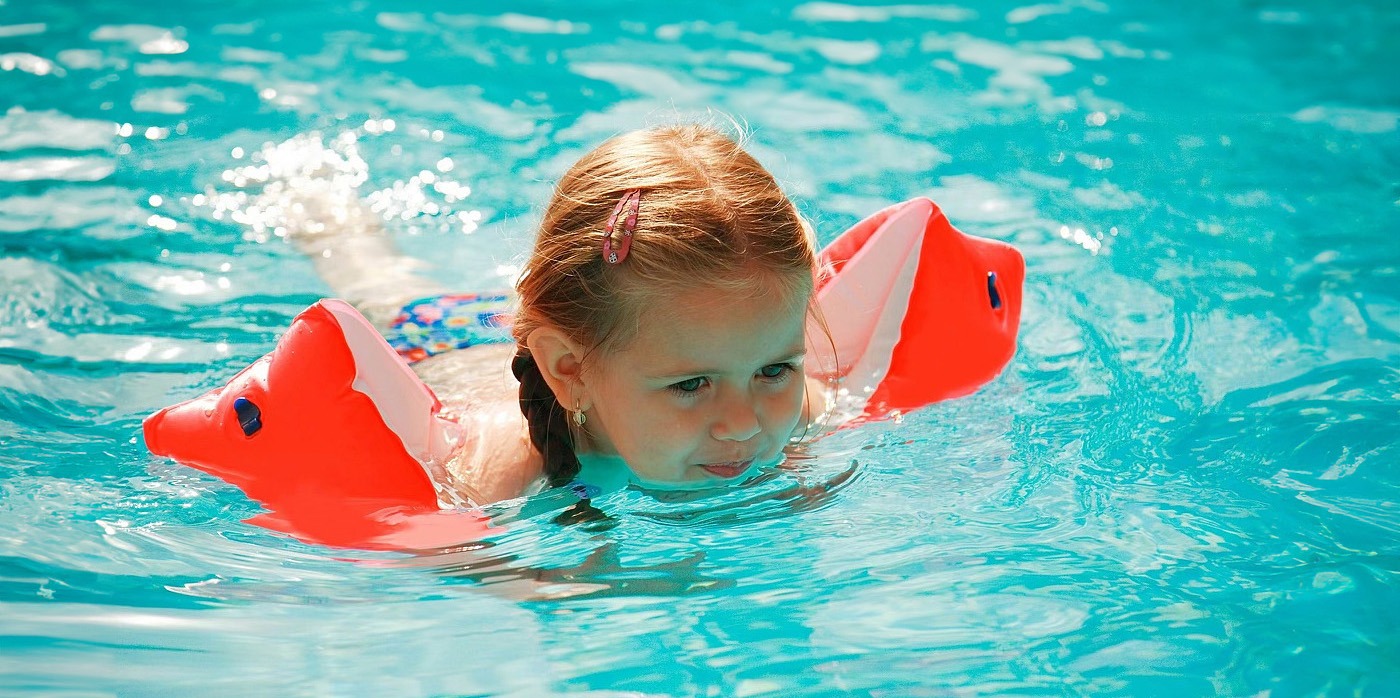
Swim Synergy is dedicated to providing gentle, individualized swim instruction that caters to each student’s unique needs and abilities. Our experienced instructors create a supportive learning environment, ensuring that students of all ages and skill levels can develop water confidence and master essential swimming techniques.
While our lessons focus on building a strong foundation for safe and enjoyable aquatic experiences, it’s crucial to prioritize water safety, especially during vacations when unfamiliar environments might be encountered. Even proficient swimmers can benefit from reviewing and adhering to water safety guidelines to ensure a fun and incident-free vacation.
This comprehensive vacation water safety checklist is designed to help swimmers of all skill levels stay safe and enjoy their time in the water, whether at the pool, beach, or water park.
Before You Go
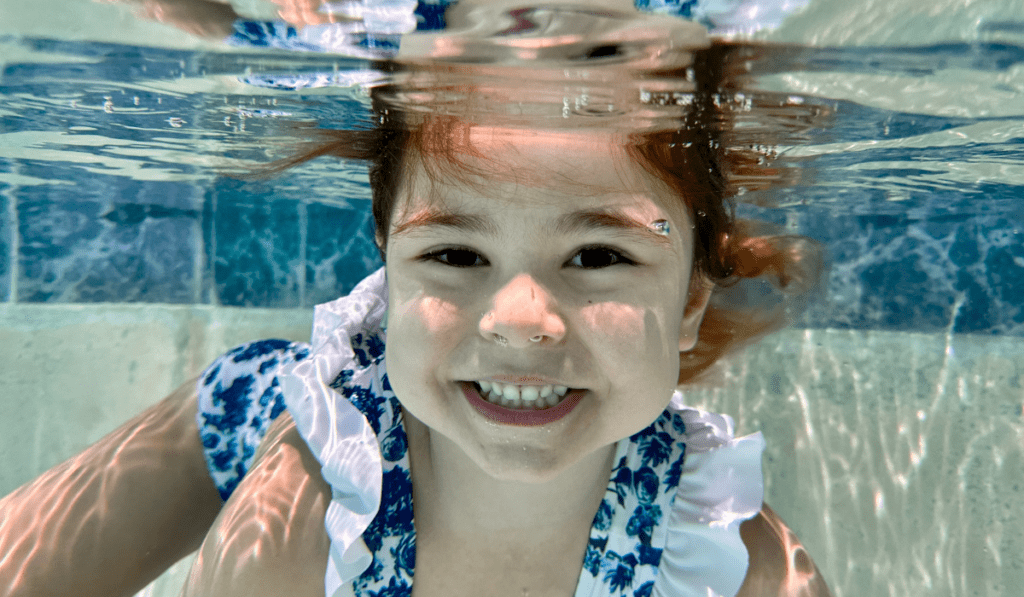
Sharpen Skills
Before embarking on your vacation, it’s a good idea to refresh your swimming skills, even if you’re a proficient swimmer. Taking a break from regular swimming can lead to a decline in technique and endurance, which can be potentially dangerous in unfamiliar water environments.
Consider scheduling a few personalized lessons with Swim Synergy to ensure you’re confident and prepared for any water activities you might encounter during your trip. Our skilled instructors will work with you to refine your technique, build endurance, and practice essential water safety skills, such as treading water, floating, and performing self-rescues.
By investing in your swimming abilities before your vacation, you’ll be better equipped to handle any challenges that may arise and fully enjoy your time in the water.
Gear Up

Having the right swim gear is essential for a safe and enjoyable vacation. Make sure to pack the following items:
- Properly fitted rash guards or sun shirts for sun protection and increased visibility
- Pool noodles or kickboards for practicing specific techniques or relaxation
- Fun pool toys for supervised play only (not to be relied upon as safety devices)
In addition to these items, don’t forget to pack essentials like goggles, swim caps, or ear plugs if you use them. It’s also a good idea to bring along a waterproof bag or backpack to store your belongings and keep them safe from sand and water damage.
Research Your Destination
Before leaving for your vacation, take some time to research the specific water features at your destination, whether it’s a beach, pool, or water park. Familiarize yourself with the layout, depth, and any potential hazards or attractions.
Look for information on lifeguard presence, beach flag warning systems, and any potential rip currents if you’re heading to a beach vacation. Many beaches and water parks have websites or social media pages that provide valuable information about water conditions, safety guidelines, and amenities.
By doing your research beforehand, you’ll be better prepared to navigate the water environment safely and confidently. If you’re traveling to a location with unique water features, such as natural springs, rivers, or lakes, be sure to investigate any specific safety considerations or regulations.
At Your Destination

Establish Ground Rules
Even proficient swimmers should establish and follow clear and consistent water safety rules to minimize the risk of accidents or injuries. Before entering the water, take a few moments to discuss and agree upon a set of guidelines with your swimming companions.
Some examples include respecting pool boundaries, staying within designated swim areas at the beach, communicating plans with a buddy, using the buddy system, and avoiding alcohol consumption before or during water activities.
By establishing and adhering to these ground rules, you and your swimming companions can create a safer environment and reduce the likelihood of water-related emergencies.
Adult Supervision is Key
While proficient swimmers may not require constant supervision, it’s still important to have a responsible adult nearby in case of emergencies or unexpected situations. This is especially crucial when swimming with children or in unfamiliar water environments.
Consider implementing the “Water Watcher” concept for young adults or teenagers who may underestimate risks. This involves partnering with another responsible adult and taking turns keeping an eye on everyone in the water, especially during group activities.
The designated Water Watcher should maintain constant visual contact, be alert for signs of distress, have a communication plan, and rotate shifts with another responsible adult to maintain alertness and prevent fatigue.
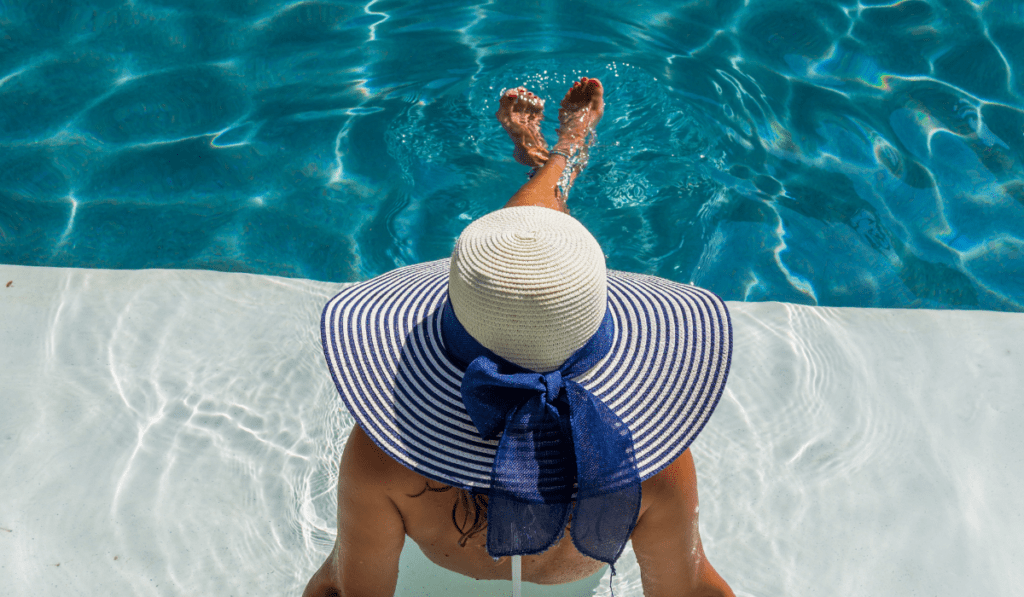
Respect the Water
Unfamiliar water environments can present unique challenges, even for proficient swimmers. It’s essential to approach any new water situation with caution and respect, acknowledging the potential risks and adjusting your behavior accordingly.
Always follow posted safety instructions and adhere to any signs, flags, or warnings posted by lifeguards or local authorities. Be aware of your surroundings, taking note of water depth, currents, and any underwater hazards.
Even if you’re a strong swimmer, it’s important to recognize your own limitations and avoid overexerting yourself. Take breaks as needed, and don’t hesitate to use flotation devices or seek assistance if you feel fatigued or uncomfortable.
Weather Matters
Weather conditions can have a significant impact on water safety, even for proficient swimmers. Before entering the water, always check the local weather forecast and be prepared to adjust your plans if necessary.
If you hear thunder or see lightning, exit the water immediately and seek shelter in a safe, indoor location. Wait at least 30 minutes after the last thunder or lightning before returning to the water.
In hot weather, be mindful of the risk of heat exhaustion or dehydration, and take frequent breaks in the shade to cool off and rehydrate. In cold weather, be aware of the signs of hypothermia and limit your time in the water to avoid excessive heat loss.

Pool Safety
While pools may seem like a more controlled environment compared to beaches or natural water bodies, they still present their own set of safety challenges. Keep these pool safety tips in mind:
- Stay alert and be aware of pool features like drains, diving boards, and slides, especially when swimming with young children who might be more curious or less cautious.
- Know your limits and listen to your body. Take breaks when needed, and if you feel fatigued, dizzy, or short of breath, exit the pool immediately and rest in a cool, shaded area.
- Stay hydrated by drinking plenty of water before, during, and after your pool session. Take frequent breaks in the shade to rehydrate and prevent heat exhaustion.
- Follow pool rules and guidelines, which are designed to ensure the safety and enjoyment of all patrons. Common rules include no running on the pool deck, no diving in shallow areas, and no glass containers in the pool area.
- Use proper equipment that is in good condition and appropriate for your skill level. Avoid using damaged or ill-fitting equipment, as this can impede your swimming ability and increase the risk of accidents.
Hot Tub and Jacuzzi Safety
Hot tubs and jacuzzi’s, with their warm and soothing waters, are designed for relaxation and muscle relaxation. However, it’s important to approach these amenities with mindfulness to ensure everyone’s safety. Here are some critical guidelines to follow:
- Monitor Water Temperature: The ideal water temperature for hot tubs is between 100°F and 102°F (37°C and 39°C). Exceeding this range can pose health risks, especially for young children, pregnant women, and individuals with heart conditions or high blood pressure. Always check the temperature before entering and adjust accordingly to avoid overheating.
- Limit Soaking Time: Prolonged exposure to hot water can lead to overheating, dehydration, and even heat stroke. It’s recommended to limit sessions to 15-20 minutes, especially for children, who are more susceptible to these risks. Taking regular breaks to cool down and hydrate can help prevent overheating.
- Stay Hydrated: The elevated temperatures in hot tubs can increase the risk of dehydration. Make sure to drink water before, during, and after your jacuzzi session, avoiding alcohol and caffeine, which can further dehydrate the body.
- Ensure Hygienic Conditions: Hot tubs and jacuzzis require regular maintenance to prevent the growth of bacteria and other pathogens. It’s crucial to regularly check and adjust the chemical levels, such as chlorine and pH, to maintain a safe and clean environment. Avoid using the hot tub if you have open wounds or skin infections to prevent spreading illness.
- Supervise Children Closely: Similar to pools, children should never be left unsupervised in or around hot tubs and jacuzzis. The risk of drowning exists even in shallow water, and the hot temperatures can affect children more quickly than adults. Establish rules for safe use and always keep a watchful eye on young bathers. Furthermore, keep the jets turned off when children are in the water; the force can be strong enough to hold them underwater or prevent them from surfacing, posing a serious drowning risk without immediate notice.
- Be Aware of Surroundings: Wet surfaces around hot tubs can be slippery and pose a fall risk. Use non-slip mats and encourage cautious movement in and around the jacuzzi area. Ensure that all electrical appliances are properly installed and maintained to prevent electric shock.
Incorporating these safety measures can greatly enhance the enjoyment and relaxation hot tubs and jacuzzis provide. By being mindful of these guidelines, you ensure a secure environment for everyone, allowing for peace of mind along with relaxation.
Beach Safety
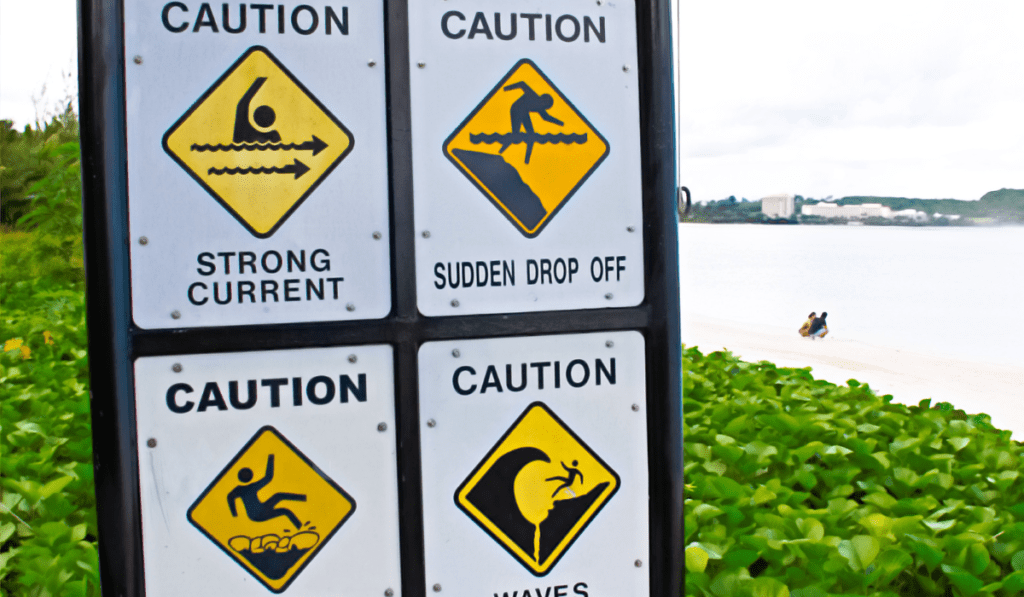
Rip Currents
Rip currents are strong, narrow channels of water that flow away from the shore, often at speeds faster than an Olympic swimmer. They can quickly pull even the strongest swimmers out to sea, making them one of the most significant hazards for beach-goers.
To stay safe in rip currents, know how to identify them by looking for areas of choppy, turbulent water, a break in the wave pattern, or a visible line of foam or debris moving steadily offshore. Always swim in areas monitored by lifeguards and heed their warnings and instructions regarding rip currents.
If you’re caught in a rip current, don’t panic or try to swim directly against it. Instead, swim parallel to the shore until you’re out of the current, then swim diagonally back to shore. If you’re unable to escape the rip current, float or tread water and call for help, waving your arms to attract attention.
Waves
Even proficient swimmers can be caught off guard by the power and unpredictability of ocean waves. Never underestimate the force of the waves, even if you’re a strong swimmer. Large, breaking waves can easily knock you off your feet and pull you under.
If the waves appear too high or powerful for your skill level, err on the side of caution and find a calmer spot to swim. When swimming or wading in the ocean, always keep an eye on the incoming waves to avoid being caught off guard by a large or unexpected swell.
If a large wave is approaching, dive underneath it rather than trying to swim over it. This will help you avoid being pulled under or knocked off balance by the wave’s force.
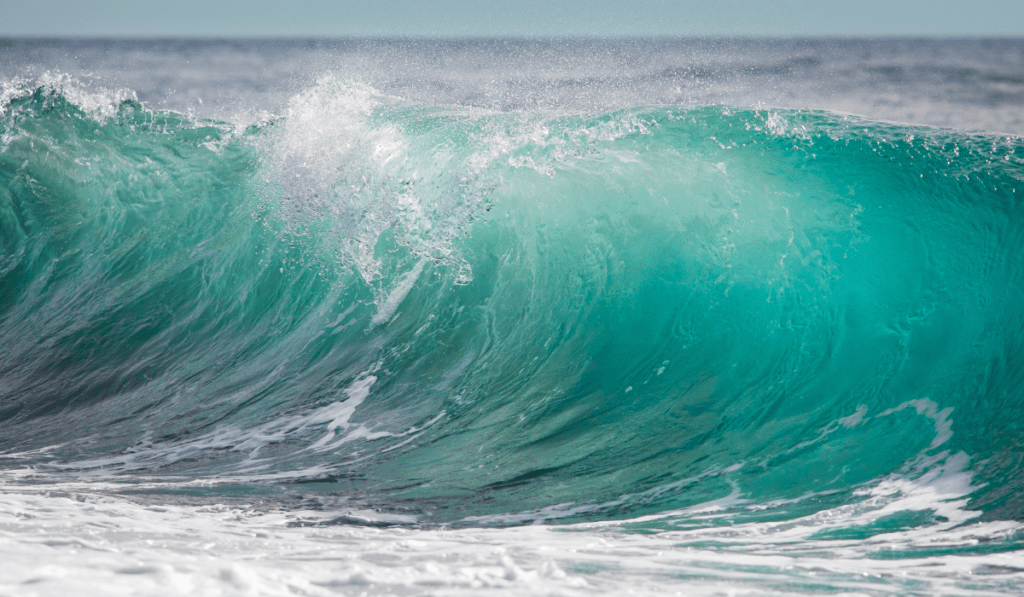
Marine Life
Many beach destinations are home to a diverse array of marine life, some of which can pose risks to swimmers. When wading in shallow water, shuffle your feet along the bottom rather than taking full steps. This can help you avoid accidentally stepping on stingrays, jellyfish, or other hidden hazards.
Never attempt to touch, feed, or interact with marine life, as this can be dangerous for both you and the animal. Some creatures, like jellyfish or sea urchins, can sting or injure you if disturbed.
If you’re swimming in an area known for potentially dangerous marine life, such as jellyfish or sharks, follow any posted warnings or guidelines from local authorities. Stay informed about the types of wildlife present and how to avoid or respond to encounters.
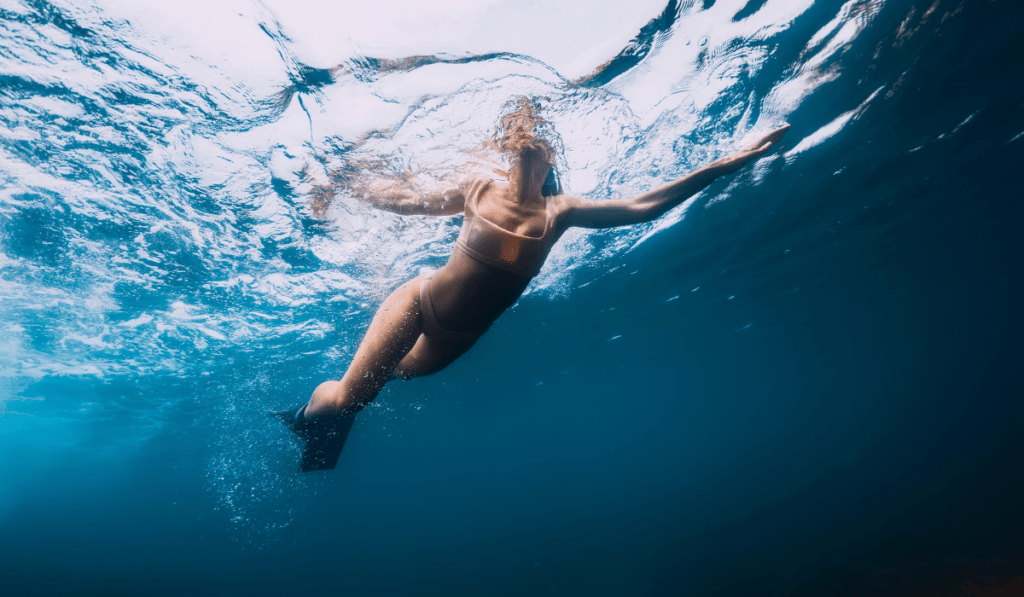
Lake Safety
Drowning Risks
One of the most significant safety concerns at lakes is the risk of drowning. Unlike pools, lakes often have murky water, uneven depths, and hidden obstacles like rocks, logs, or drop-offs that can catch swimmers off guard.
To minimize the risk of drowning, always wear a properly fitted life jacket when swimming or boating in a lake, especially if you’re not a strong swimmer or are unfamiliar with the area. Avoid diving into the water, as it can be difficult to gauge the depth and detect submerged hazards.
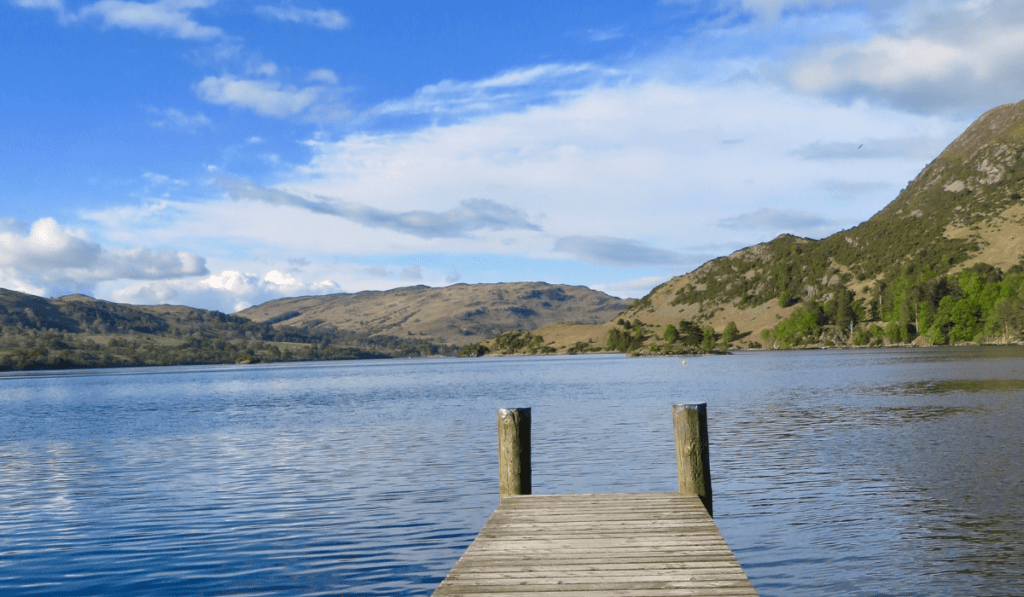
Dangerous Wildlife
Another common hazard at lakes is the presence of dangerous wildlife, such as snapping turtles, snakes, or even alligators in some regions. To avoid unwanted encounters, be cautious when swimming in areas with dense vegetation or near the shore, where wildlife may be more prevalent.
If you spot any potentially dangerous animals, exit the water calmly and notify others in the area.
Harmful Bacteria and Microorganisms
Lakes can also be breeding grounds for harmful bacteria and microorganisms, such as E. coli or Naegleria fowleri (a rare but potentially fatal brain-eating amoeba). To minimize the risk of infection, avoid swimming in lakes immediately after heavy rainfall, as this can lead to increased runoff and contamination.
Don’t swim in areas with visible algae blooms or stagnant water, and try to keep your head above water to reduce the risk of ingesting or inhaling contaminated water.
Sun Exposure
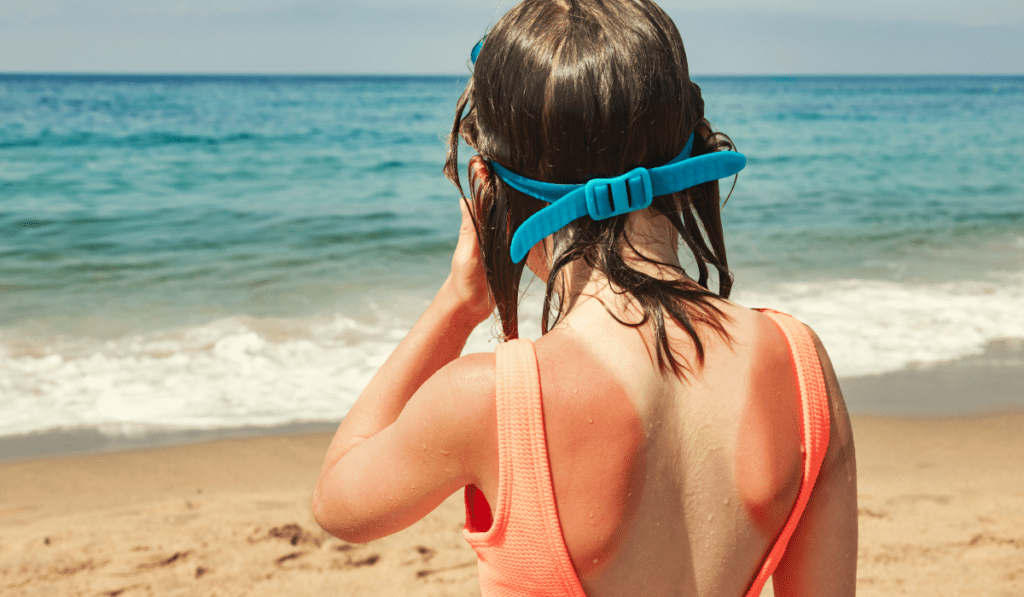
Sun exposure is another significant concern when swimming in lakes, as the reflective surface of the water can intensify the sun’s rays and increase the risk of sunburn, heat exhaustion, or dehydration.
Always wear water-resistant sunscreen with a high SPF, and reapply frequently, especially after swimming or sweating. Wear protective clothing like rash guards, hats, and sunglasses, and take frequent breaks in the shade to cool off and rehydrate.
Other Hazards
Other common injuries and accidents at lakes include cuts and abrasions from rocks or debris, sprains or fractures from slips and falls on wet surfaces, and boating-related incidents like collisions or capsizing.
To minimize these risks, always wear protective footwear when walking on rocky or uneven shorelines, follow posted safety guidelines and warnings, and ensure that any boating activities are supervised by experienced and properly trained individuals.
Water Safety Education
Essential Safety Topics
Even proficient swimmers can benefit from reviewing and reinforcing basic water safety principles. Before heading to the beach, take some time to educate yourself and your swimming companions on essential safety topics, such as:
- The dangers of swimming alone
- How to identify and avoid hazards like rip currents, strong waves, and marine life
- The importance of staying hydrated
- How to perform basic rescues
Understanding Beach Flags
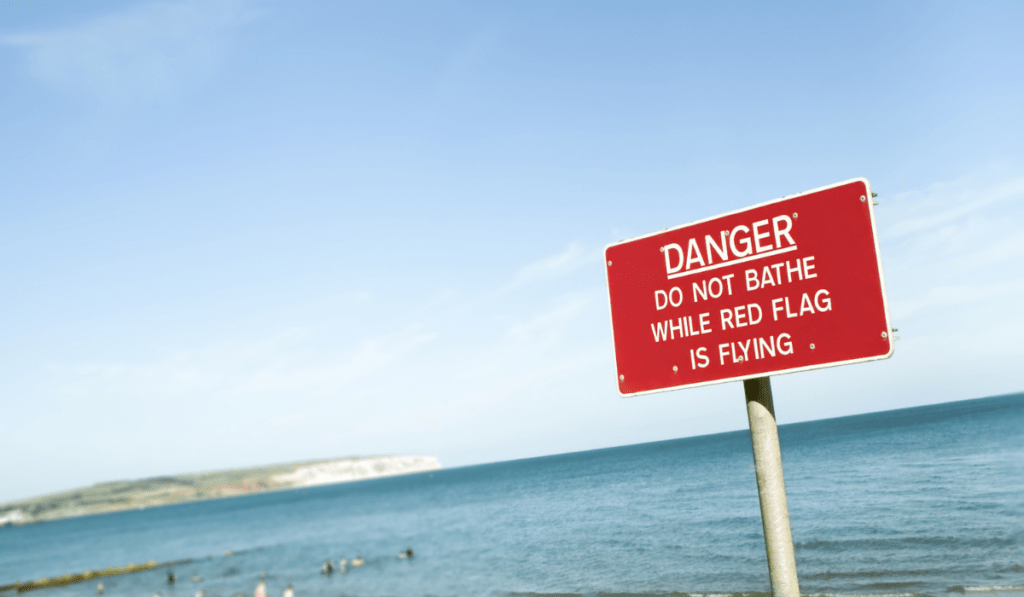
Many beaches use a flag system to communicate important information about water conditions and potential hazards. Familiarize yourself with the meanings of different flag colors, especially if you’re visiting a new or unfamiliar beach:
| Flag Color | Meaning |
|---|---|
| Green | Low hazard, calm conditions |
| Yellow | Medium hazard, moderate surf/currents |
| Red | High hazard, rough conditions |
| Double Red | Beach closed to public |
| Purple | Dangerous marine life |
By understanding and adhering to beach flag warnings, you can make informed decisions about when and where to swim, minimizing the risk of accidents or injuries.
Brightly Colored Swimwear/Rash Guards
Consider wearing brightly colored swimwear or rash guards to increase your visibility in the water, especially in crowded or murky conditions. Bright colors like orange, yellow, or red can help you stand out and make it easier for lifeguards or other beach-goers to spot you if you need assistance.
This is particularly important for children or less experienced swimmers who may be more difficult to locate in an emergency situation.
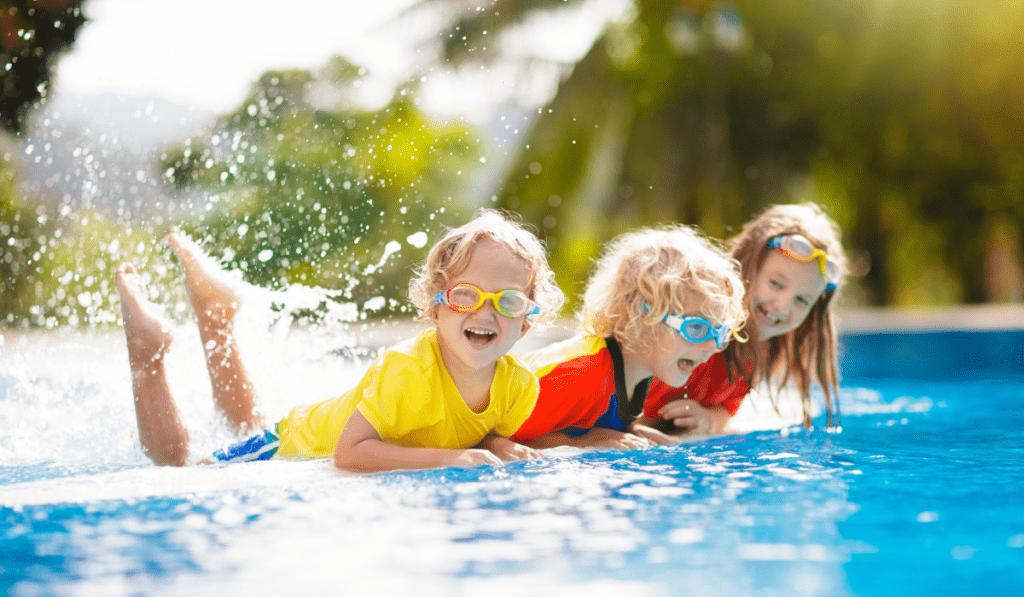
Conclusion
Staying vigilant and practicing water safety is essential for a fun and relaxing vacation, even for proficient swimmers. By following this comprehensive checklist and considering additional swim lessons with Swim Synergy to maintain confidence and refine skills, you can enjoy your time in unfamiliar water environments while prioritizing safety.
Remember, water safety is a continuous learning process, and Swim Synergy is here to support you every step of the way. Our personalized lessons cater to your individual needs, ensuring that you’re well-prepared for any aquatic adventure. Whether you’re looking to refresh your skills before a vacation, learn new techniques for open-water swimming, or simply gain more confidence in the water, our experienced instructors are dedicated to helping you achieve your goals.
In addition to our individualized lessons, Swim Synergy also offers a range of resources and educational materials to help you stay informed and engaged with water safety topics. From blog posts and articles to community events and workshops, we strive to create a supportive and informative environment for swimmers of all ages and skill levels.
As you embark on your next aquatic adventure, keep this vacation water safety checklist in mind. Prioritizing safety is the key to a truly enjoyable and memorable experience. Happy swimming and safe travels!


